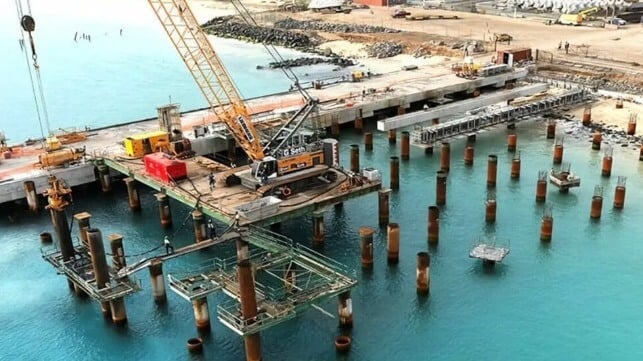Cabo Verde Targets African Connectivity with Maio Port Modernization

Cabo Verde is targeting to become a major player in the West Africa cargo transportation and tourism corridor after inaugurating the modernized Maio port, a project that cost $42 million. The remote island nation is located in the Atlantic west of Senegal.
Cabo Verde Prime Minister of Ulisses Correia e Silva said the upgrade of the port facility is a strategic investment that marks a new era for the island of Maio by bringing it closer to the other islands in the country and the rest of the world, thus enhancing the archipelago’s status not only as a leading tourists destination but also a critical connectivity hub in West Africa.
The port will facilitate passenger and cargo transport along the strategic Praia–Dakar–Abidjan corridor and significantly increase the potential of the island of Maio to attract more tourists to the UNESCO-designated biosphere.
The extension and upgrade of the port, whose rehabilitation began in 2019, is a key element of the $42 million blending project co-financed by the European Union which contributed $17 million, the African Development Bank ($17.6 million), and the Cabo Verde government ($7.1 million), which also includes smaller works on the port on the island of Sal and accompanying measures to strengthen municipal services in Maio.
“This infrastructure is part of the strategy to unify the national market, which places our archipelagic condition at the center of development priorities. It will have an impact in boosting the island's economy, attracting private investment, promoting mobility and employment, increasing income, and improving conditions for a better future for our young people,” said Correia e Silva.
The modernization of the port, which is part of the Porto Inglês and Palmeira ports modernization and expansion project, consisted of the rehabilitation and repair of defects found on the existing quay which is over 1,100 feet long and 49 feet wide, the construction of two Ro-Ro ramps and their accesses, the construction of a nearly 500-foot long breakwater dike, the rehabilitation and extension of the port embankment to transform it into a storage area and protect it against marine erosion and the upgrading of the half-mile long access road leading to the port.
With Maio being an integral part of the Praia–Dakar–Abidjan corridor in West Africa, the port is expected to become a critical hub in cargo transportation in the region. The growth of maritime transportation is critical for the West African country, given its geographic location.
The corridor is strategic in facilitating trade and mobility within Africa as well as between Africa and Europe and supporting investment in sustainable, efficient, and safe connectivity between the continents and the development of new value chains to benefit industries in Africa and Europe.
The new facility is also expected to significantly boost the tourism potential of the island, marking a new era in its economic development because Maio Island will benefit from better connectivity with Santiago, the largest island of Cabo Verde that hosts the capital city Praia, the other islands in the archipelago, airports and international corridors.
Tourism is a primary driver of Cabo Verde’s economy and, before the COVID-19 pandemic, accounted for at least 24 percent of the country’s gross domestic product, 10 percent of formal employment, and the majority of foreign direct investment. In 2019, the island welcomed almost 820,000 tourists up from 145,000 in 2000. The government has launched its tourism operational plan 2022-2026, which among other objectives has the goal of attracting 1.2 million tourists by 2026.
“Cabo Verde will be able to welcome increasing numbers of tourists while maintaining the highest environmental and social standards that are so necessary to ensure long-lasting benefits,” noted Jutta Urpilainen, European Commissioner for International Partnerships.
The Maio biosphere reserve in Cabo Verde encompasses the entire island and marine zone and is home to turtles, cetaceans, and fishes such as the lemon shark and tiger shark. The island hosts more than 256 different kinds of animals, including three lizard species, while over 100 varieties of migratory birds visit the region.
